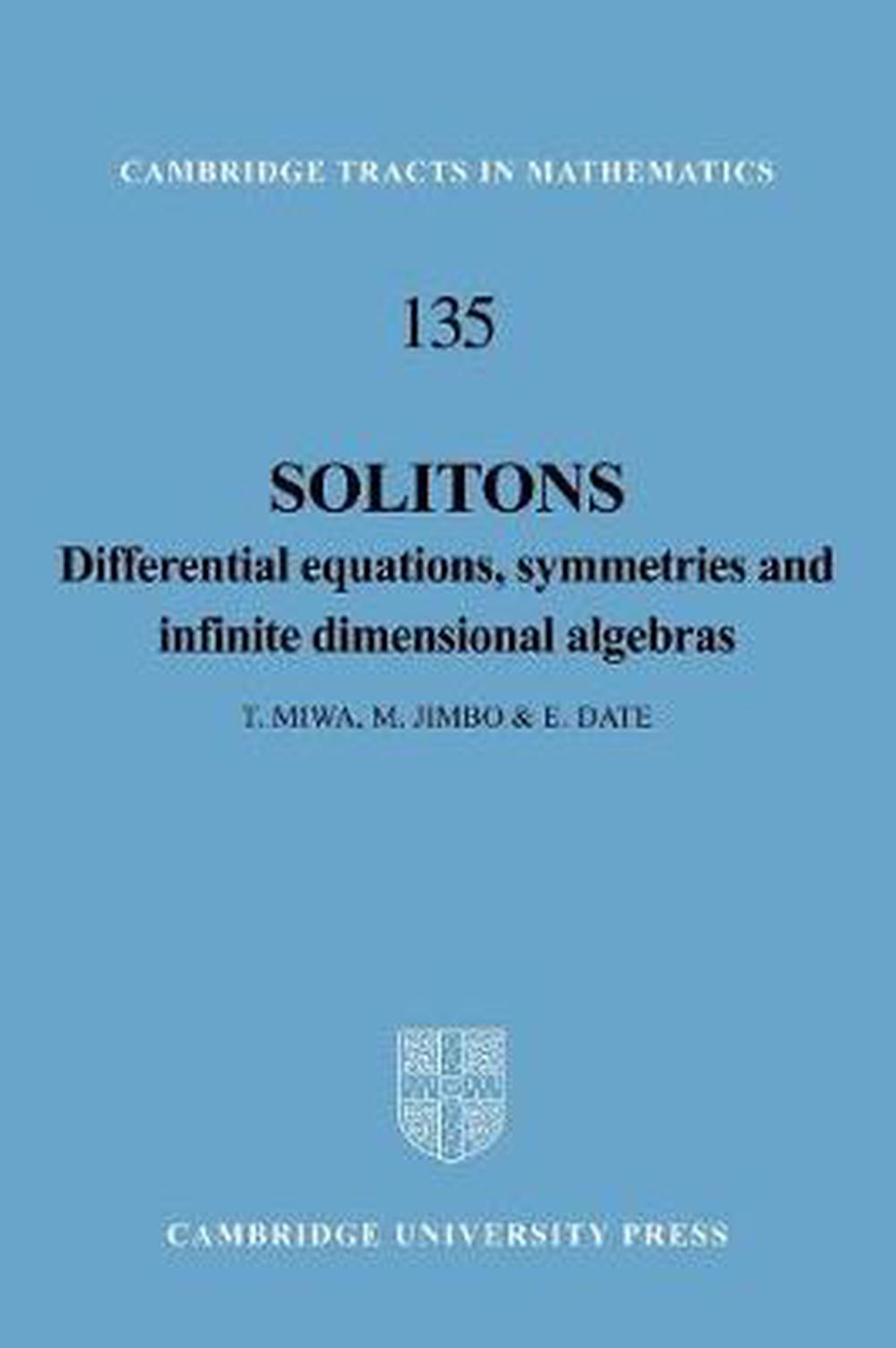
When you click on links to various merchants on this site and make a purchase, this can result in this site earning a commission. Affiliate programs and affiliations include, but are not limited to, the eBay Partner Network.
Solitons: Differential Equations, Symmetries and Infinite Dimensional Algebras b

- Item No : 156841944991
- Condition : Brand New
- Brand : No brand Info
- Seller : the_nile
- Current Bid : US $77.45
-
* Item Description
-
The Nile on eBay

Solitons
by T. Miwa, M. Jimbo, E. Date
This 1999 book investigates the high degree of symmetry that lies hidden in integrable systems. Differential equations arising from classical mechanics, such as the KdV equation and the KP equations, are used here by the authors to introduce the notion of an infinite dimensional transformation group acting on spaces of integrable systems.
FORMAT
PaperbackLANGUAGE
EnglishCONDITION
Brand New
Publisher Description
This book was first published in 1999 and investigates the high degree of symmetry that lies hidden in integrable systems. To that end, differential equations arising from classical mechanics, such as the KdV equation and the KP equations, are used here by the authors to introduce the notion of an infinite dimensional transformation group acting on spaces of integrable systems. The work of M. Sato on the algebraic structure of completely integrable systems is discussed, together with developments of these ideas in the work of M. Kashiwara. This book should be accessible to anyone with a knowledge of differential and integral calculus and elementary complex analysis, and it will be a valuable resource to the novice and expert alike.
Author Biography
Miwa, Kyoto University, Kyoto, Japan.
Table of Contents
Preface; 1. The KdV equation and its symmetries; 2. The KdV hierarchy; 3. The Hirota equation and vertex operators; 4. The calculus of Fermions; 5. The Boson-Fermion correspondence; 6. Transformation groups and tau functions; 7. The transformation group of the KdV equation; 8. Finite dimensional Grassmannians and Plucker relations; 9. Infinite dimensional Grassmannians; 10. The bilinear identity revisited; Solutions to exercises; Bibliography; Index.
Promotional "Headline"
This book was first published in 1999 and investigates the high degree of symmetry that lies hidden in integrable systems.
Description for Bookstore
This 1999 book investigates the high degree of symmetry that lies hidden in integrable systems. Differential equations arising from classical mechanics, such as the KdV equation and the KP equations, are used here by the authors to introduce the notion of an infinite dimensional transformation group acting on spaces of integrable systems.
Description for Library
This 1999 book investigates the high degree of symmetry that lies hidden in integrable systems. Differential equations arising from classical mechanics, such as the KdV equation and the KP equations, are used here by the authors to introduce the notion of an infinite dimensional transformation group acting on spaces of integrable systems.
Details
ISBN1107404193Author E. DatePublisher Cambridge University PressSeries Cambridge Tracts in MathematicsYear 2012Translator Miles ReidISBN-10 1107404193ISBN-13 9781107404199Format PaperbackImprint Cambridge University PressSubtitle Differential Equations, Symmetries and Infinite Dimensional AlgebrasPlace of Publication CambridgeCountry of Publication United KingdomTranslated from JapaneseAffiliation Kyoto University, JapanDEWEY 515.353Short Title SOLITONSLanguage EnglishMedia BookSeries Number 135Pages 120Residence USPublication Date 2012-04-19Illustrations Worked examples or ExercisesAudience Professional and ScholarlyUK Release Date 2012-04-19AU Release Date 2012-04-19NZ Release Date 2012-04-19


-
- The Lost Super Foods
- $ 37.00
- The Self-Sufficient Backyard
- $ 37.00
- A Navy Seals BUG IN GUIDE
- $ 39.00
- Childrens Books Phonics Lot 60
- $ 34.99
















